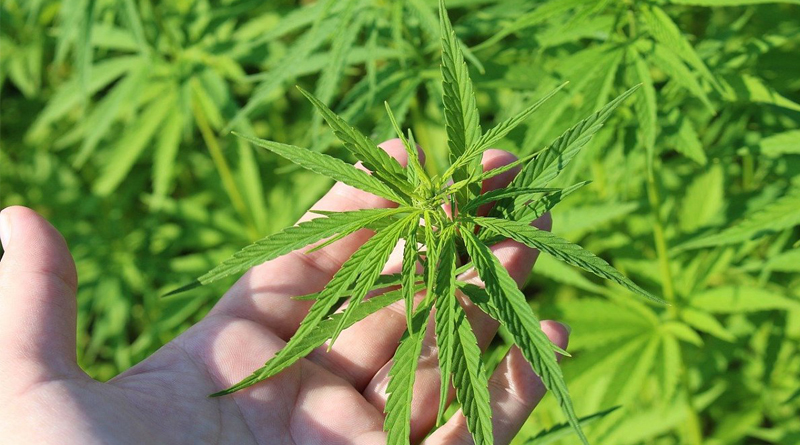Based on growing consumer interest and market trends around natural hemp-based food and beverage products, Bell Flavors & Fragrances EMEA has launched a new range of botanical hemp flavors and extracts obtained from the Cannabis sativa plant. The new range offers “authentic taste profiles” for various categories, including non-alcoholic and alcoholic beverages, bakery products and sweet goods, as well as savory products. The hemp extracts are used in combination with other natural flavoring components in the company’s range of natural flavors.
“When talking about hemp, we need to be aware that it became mainly popular for its natural content of cannabidiol (CBD) and tetrahydrocannabinol (THC), which leads to regulatory aspects. As these substances are legally restricted within the EU, we had to make sure that the amounts of both substances used as ingredients meet the legislation requirements, while keeping the sensory appeal at the same time,” Andrea Panajotowa, Marketing Specialist Flavours at Bell, tells FoodIngredientsFirst.
Hemp-based products are increasingly appearing in the food and drink sector.
Taste solutions for authentic product innovations based on the hemp megatrend have ballooned in the past year. Hemp-based products are increasingly appearing in the food and drink sector, with a constantly rising number of new product launches that display the hemp leaf on-pack, responding to consumer curiosity and the desire to experiment with hemp, as highlighted by Bell.
“The hemp we used in our natural product portfolio is obtained from the Cannabis sativa plant [seeds or leaves] and sourced in Europe. Bell ensures full compliance with European and German legislation. However, other specific national legislation may interfere with European provisions, as for example, the residual amounts of THC are stricter in some countries than others,” explains Panajotowa.
Bell’s botanical hemp extracts and natural flavors – in a liquid format – are specifically designed to convey the characteristic herbal and floral taste profile of hemp. The range lends a signature profile to a variety of sweet and savoury applications, including beer and beer-mixers; cider and spirits; non-alcoholic beverages; baked goods; sugar confectionery; sauces such as ketchup and mayonnaise; flavored oils and meat marinades.
Moreover, the brand outlines that its all-natural range enables a clean label declaration, that conveys a “better-for-you” and premium appeal. The new taste creations are delivering unique profiles for range extensions that target younger consumer groups, while addressing consumers’ health and wellness aspirations alongside hemp’s superfood associations.
Consumer insights and hemp market dynamics
Bell notes that hemp foods rely on three convergent forces: More countries permitting legal cultivation and processing of hemp, surging investment fueling product innovation and the scale and rising consumer interest in the plannt’s healthful nutrient profile. A significant driver of hemp’s surging popularity is largely attributed to consumers’ growing interest in plant-based and free-from diets. Moreover, hemp has gained high importance due to its reported nutritional benefits. Hemp seeds are particularly marketed as a “superfood” due their high omega 3 and 6 content and highly digestible protein comprising of all essential amino acids.
Bell has invested in market-oriented product concepts based on market and category analyses, which determine the major trends and taste directions that are shaping the industry. Next to products designed for the EMEA market, Bell’s products also comprise a US-portfolio of hemp flavours and extracts, as well as specific cannabis flavours designed to replicate strain specific terpenes (aromatic oils that distinguish cannabis varieties) for the Canadian market.
In the US, hemp was removed from the Controlled Substances Act (CSA) in December 2018, and hulled hemp seeds, hemp seed protein and hemp seed oil were certified with Generally Recognized as Safe (GRAS) status. While the trend continues to grow, industry analysts have expressed concerns about volatility in the hemp market due to supply chain imbalances, as highlighted in an exclusive interview on FoodIngredientsFirst’s sister website NutritionInsight.
Still, Bell remains optimistic about the future of the emergent botanical. The company highlights the most active countries in the hemp market as Germany, US, UK, Canada and France. Furthering the hemp trend, the growing buzz around CBD is likely to fuel future innovation in food and beverage developments, based on a growing consumer desire for functional products with this ingredient. However, patchy regultory assertions for CBD still pose significant challenges within a number of markets.
The hemp CBD market totaled US$190 million in 2018 – an astounding rate of growth for a category that didn’t even exist five years ago – according to The Hemp Business Journal estimates. By 2022, sales are projected to reach US$22 billion, notes the Brightfield Group, a cannabis and CBD market research firm.
“According to market data, the global hemp-based food market is expected to grow at a CAGR of 24 percent until 2022, indicating that the hemp trend is going mainstream. New product launches are increasingly driven by categories such as snacks, especially energy bars, beverages, breakfast cereals and bakery products as well as sauces and seasonings. The key to growth is how quickly mainstream retail channels will include grocery stores carrying hemp-based foods,” concludes Panajotowa.
Source: Food Ingredients First







